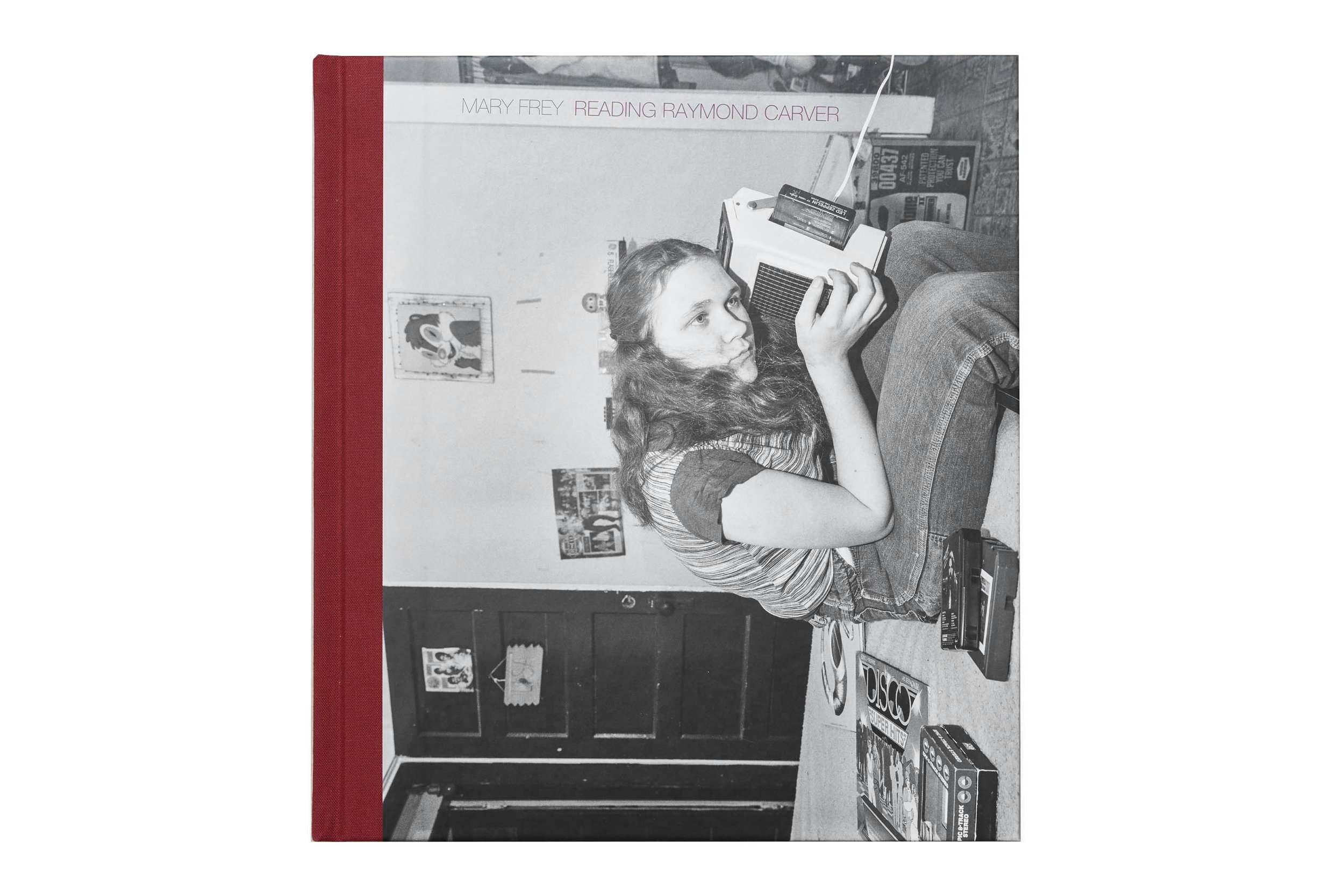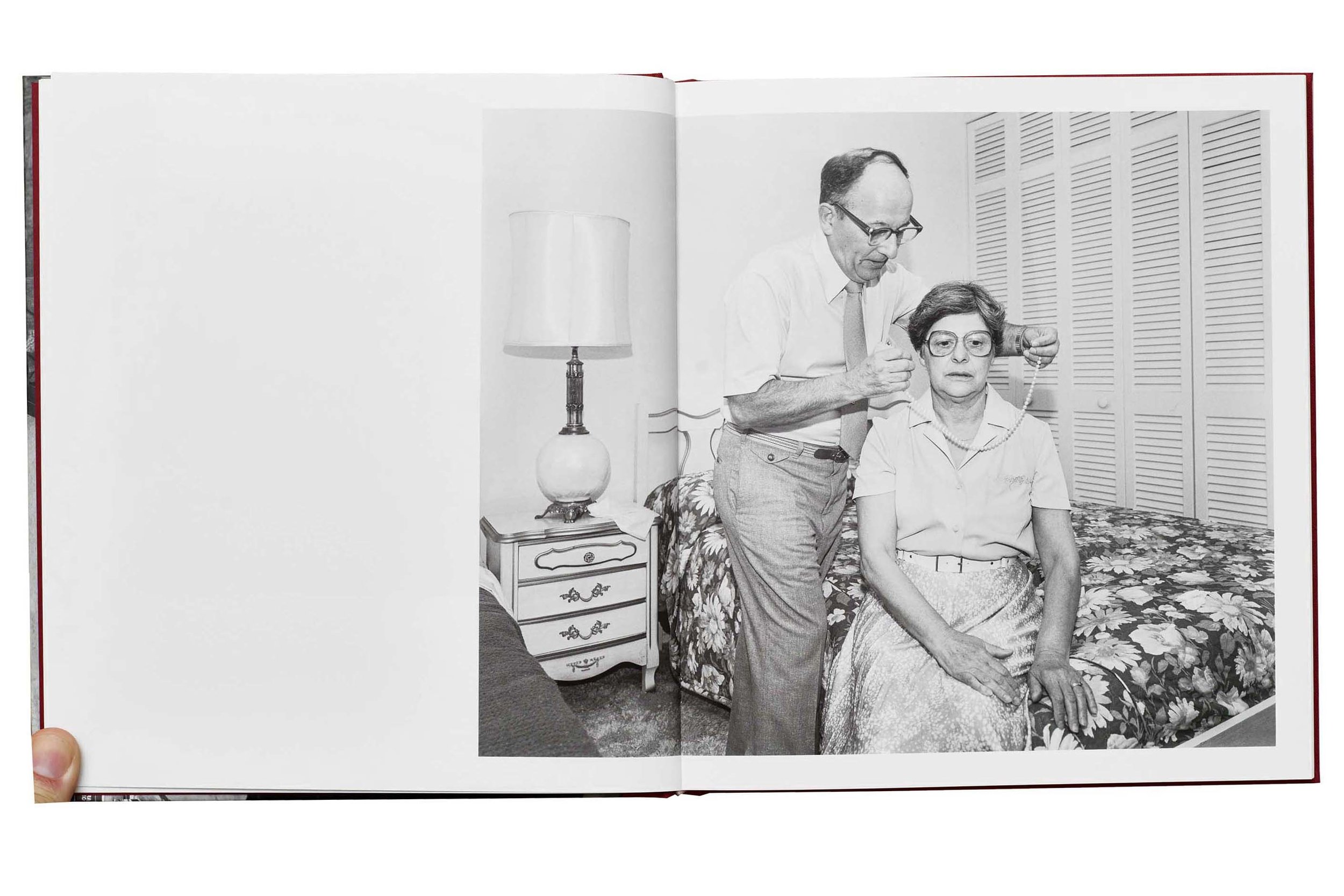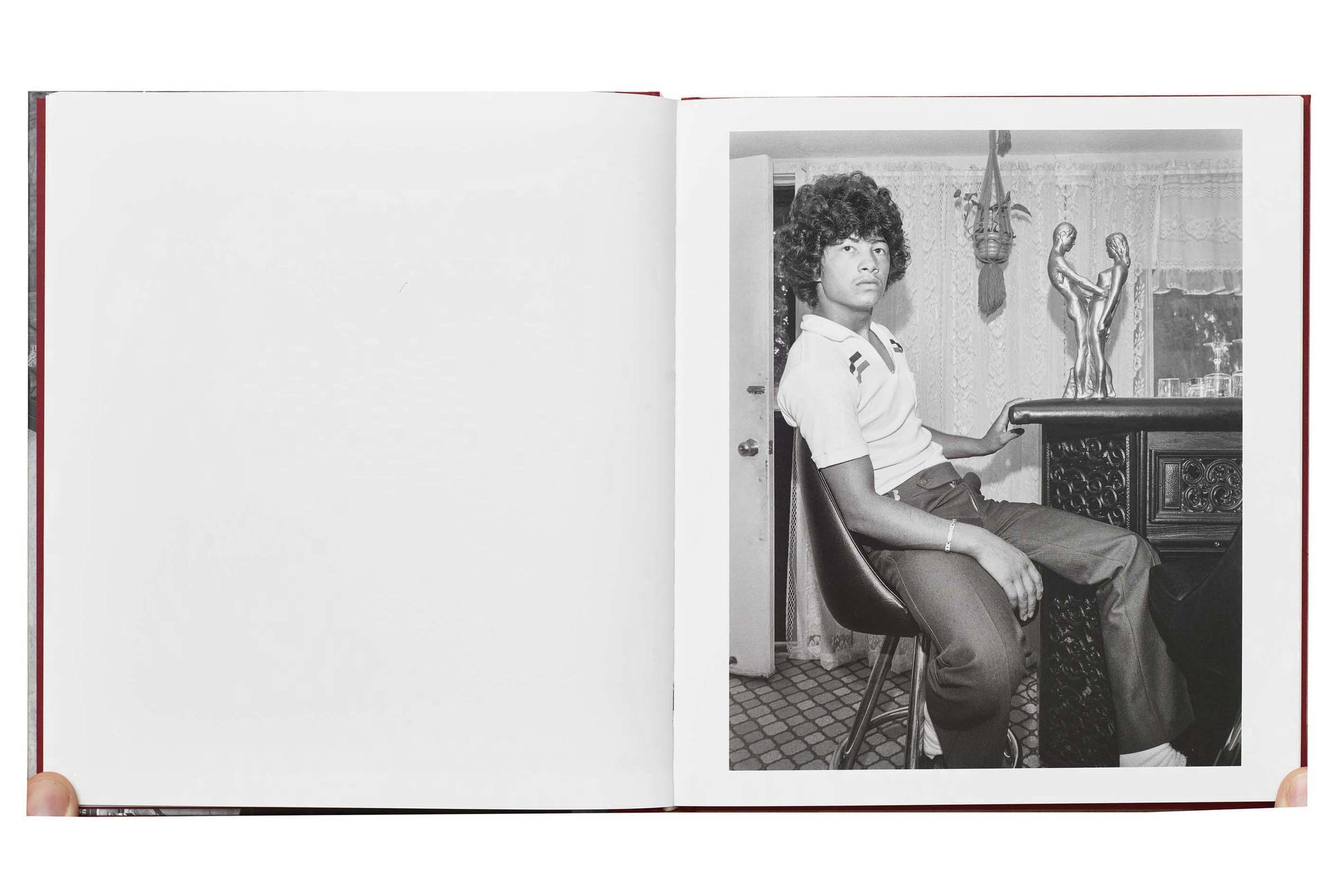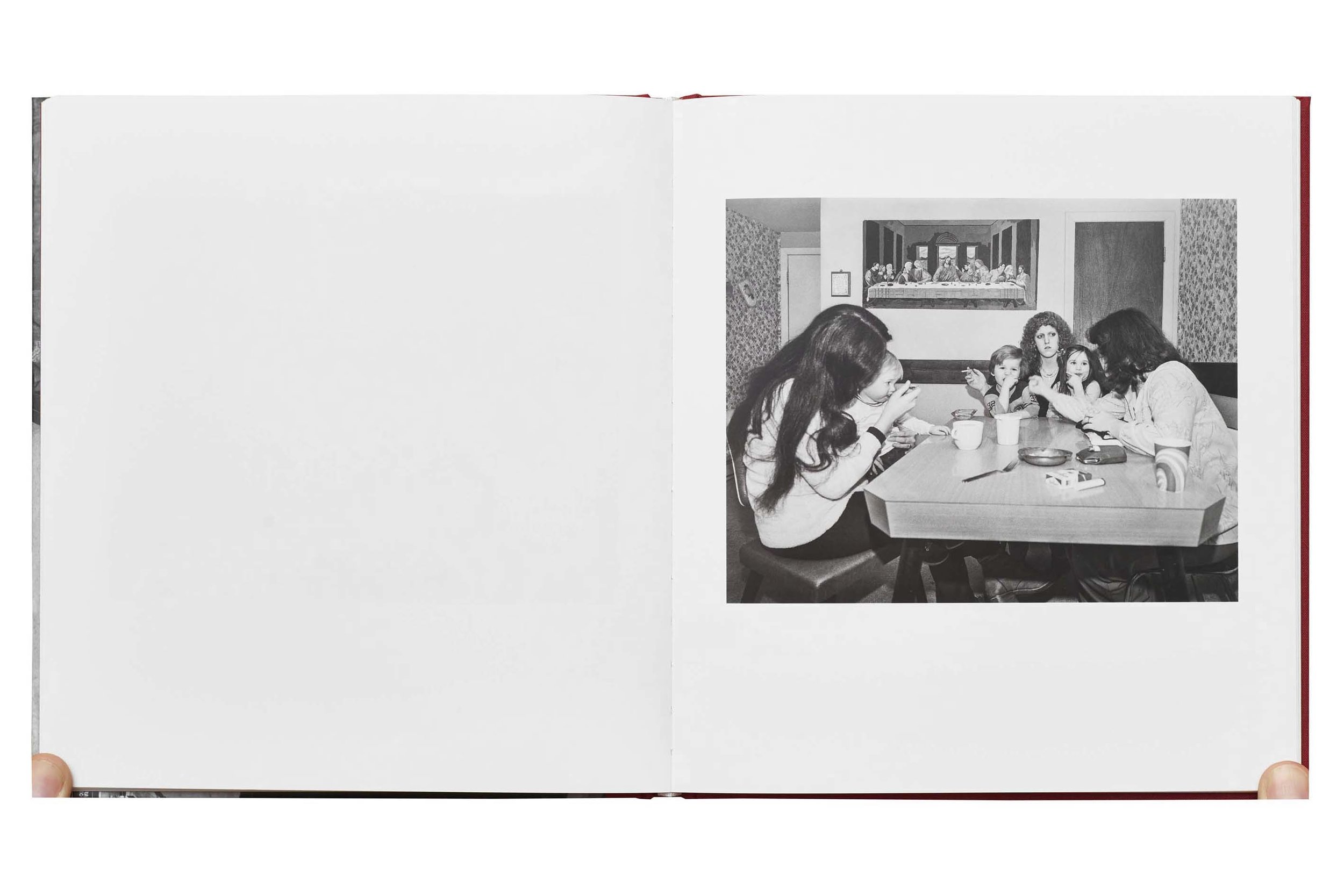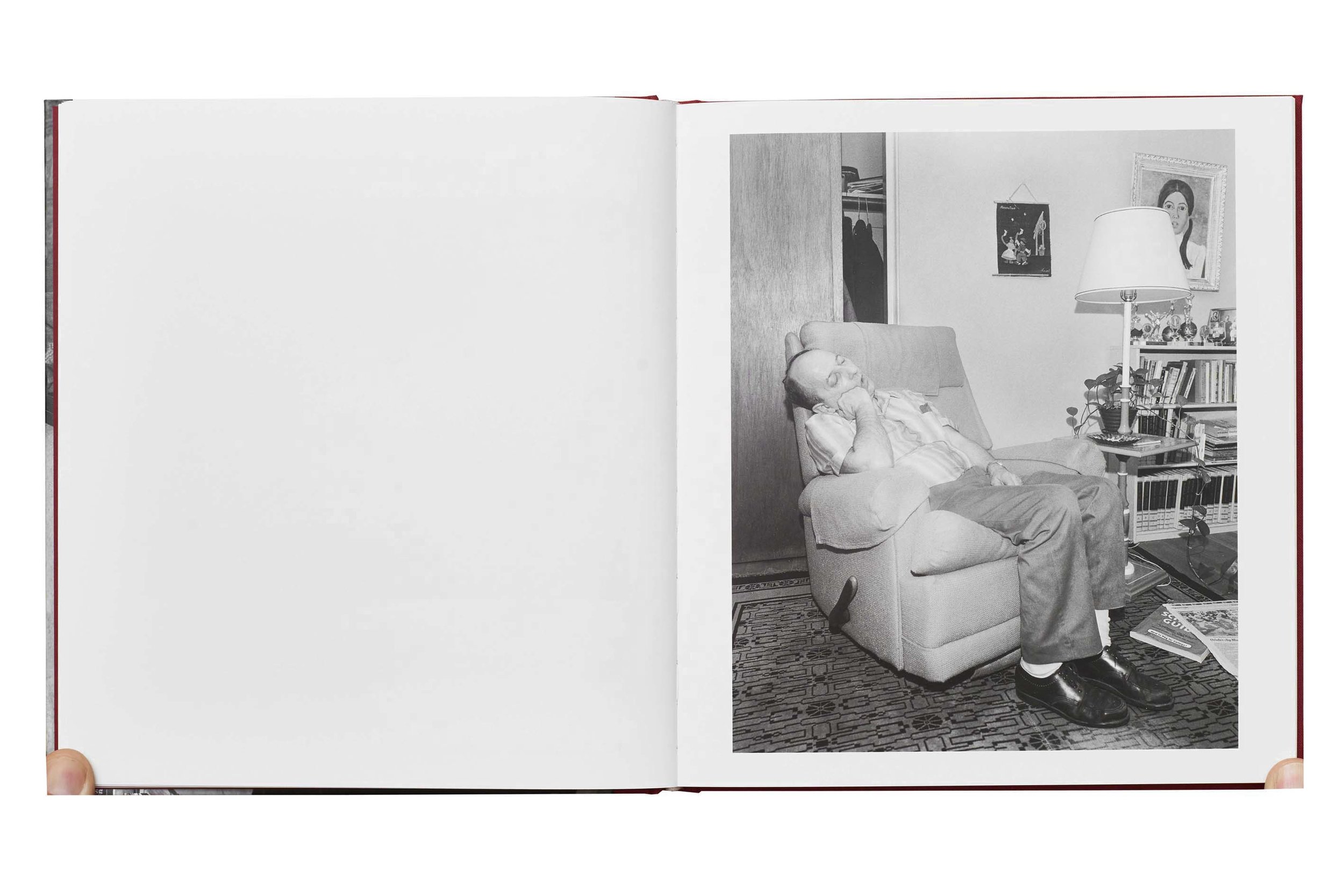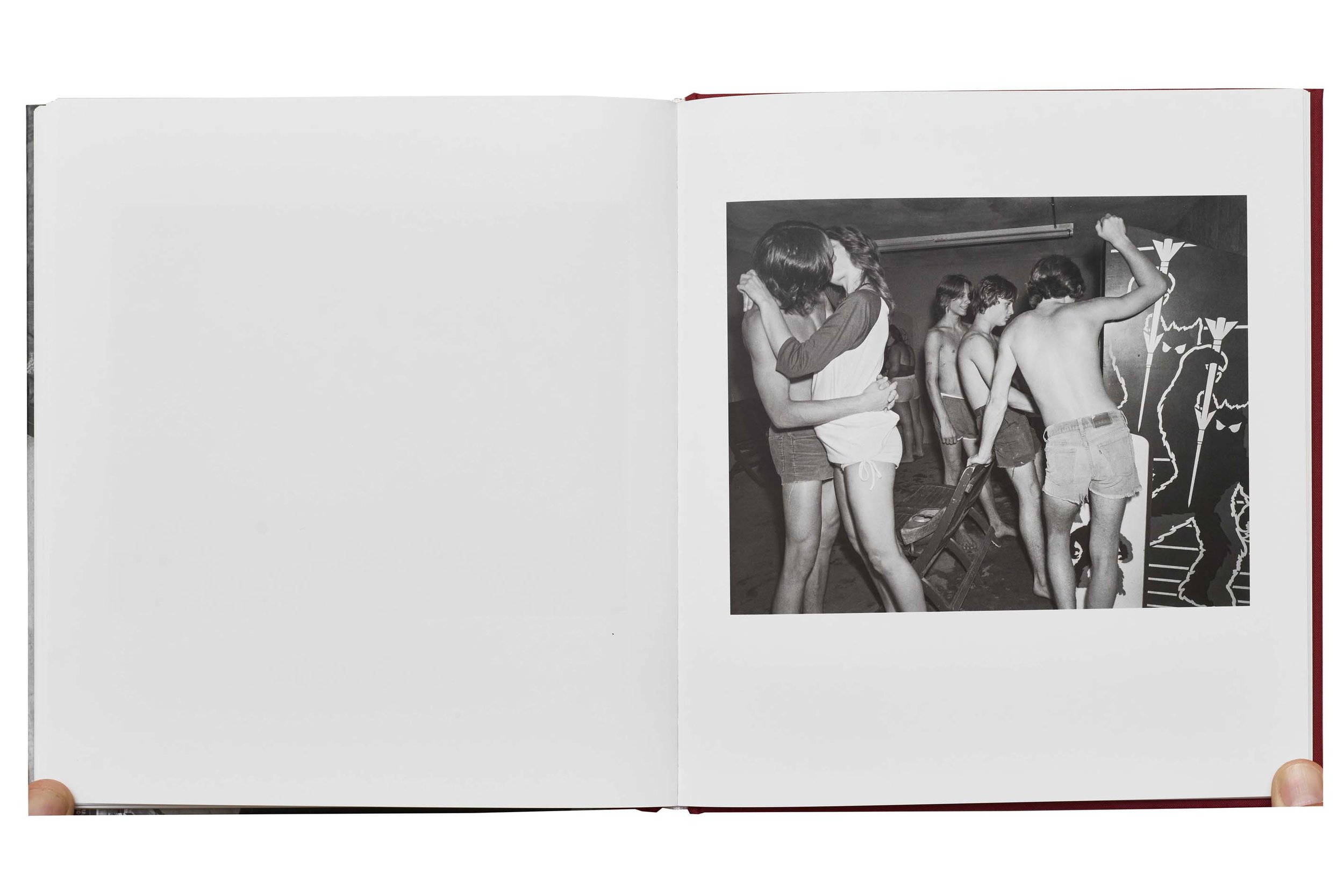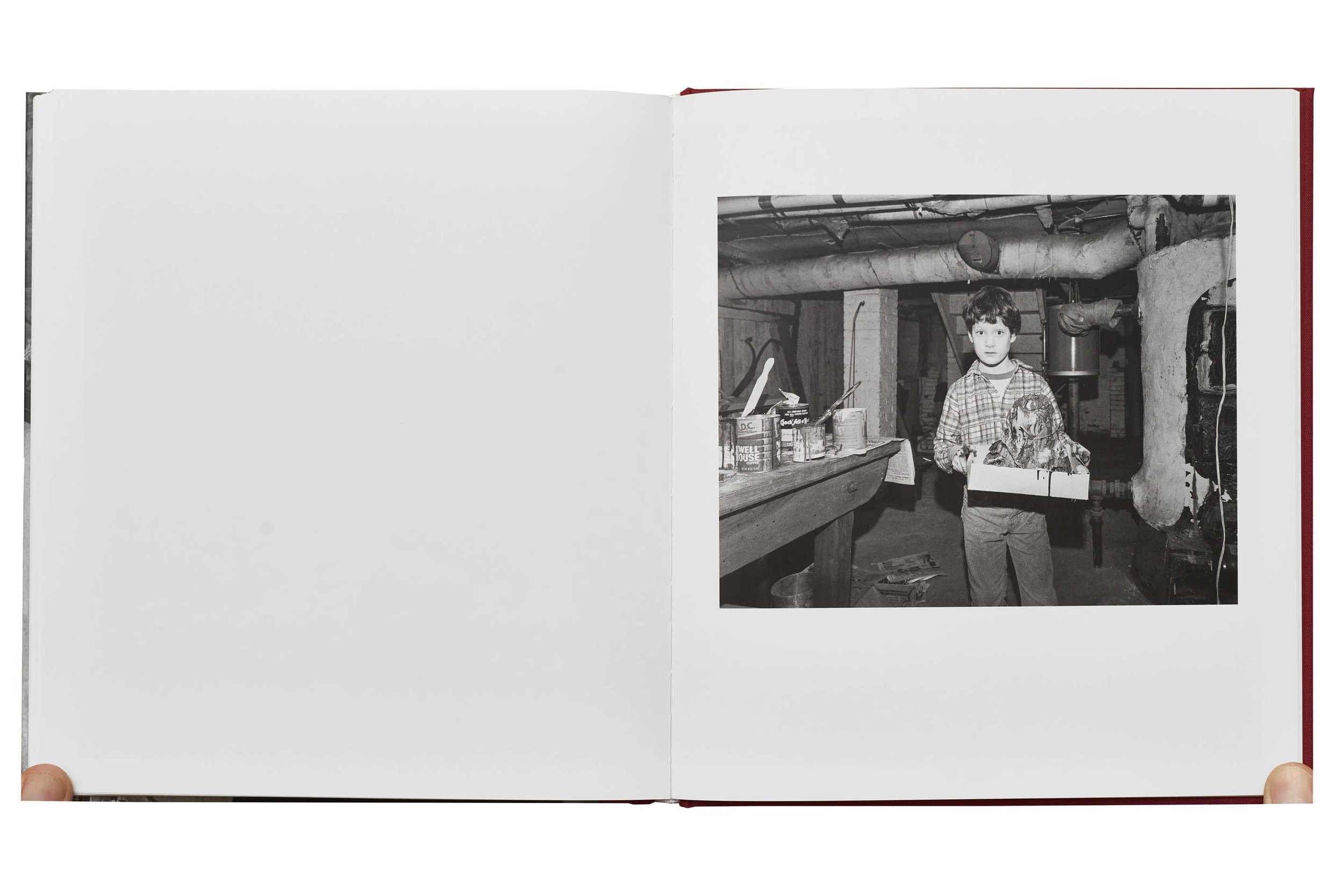A very interesting comparison could be made between the book in the previous article Interieurs by Thomas Ruff and the new book by Mary Frey called Reading Raymond Carver. The work in each of these titles was photographed in the late 70s early 80s; both describe something of domesticity and family; both are fascinated with interior decor; and both seem to question whether the character of the subjects can be surmised by their surroundings - if Thomas Ruff’s photographs of German homes in the Black Forest can speak of “German-ness,” do Mary Frey’s photographs made in the homes of families and friends in Massachusetts suburbs speak to something unique about “American-ness.”
Frey cites inspiration from the national mood of her childhood where “the nuclear family reigned supreme, and general interest magazines like Life and Good Housekeeping showed us what the world should look like, I began to mimic this 50s imagery” yet she concludes, “I can’t recall exactly what I was feeling at the time, but I do remember that I was reading Raymond Carver.” This is the charm for me of much of Frey’s work, her photographs have a light-hearted wink to the viewer yet, if one takes the time, you perceive life’s complications without getting to the level of Carver’s dispiriting desperation. As a husband drapes a string of pearls around his wife’s neck, her eyes slightly distorted buy her oversized eyeglasses are unseeing, appearing entirely in thought - his effort at taking care show in the tension of his mouth and chin; the young girl on the book’s cover, closely listening to an eight-track tape player, seems as awkward on the edge of her bed as she might feel in public; a young boy who has made a papier-mâché volcano in the basement presents his creation almost with uncertainty of what he holds in his hands; a mother holding two children is unaware that she is become a cigarette smoking Jesus figure in a modern-day depiction of the Last Supper.
There is grace present in these images that doesn’t seem forced or contrived and her humor rarely reads as a one-liner. This work is a fine example of how embracing everyday life can be far more interesting and surprising than the pre-planned contrivance or construction. One just has to take the risk of trusting in the world, even if that world is just your living room.
- Reading Raymond Carver by Mary Frey
- Peperoni Books, 2017
- ISBN: 9783941249127
